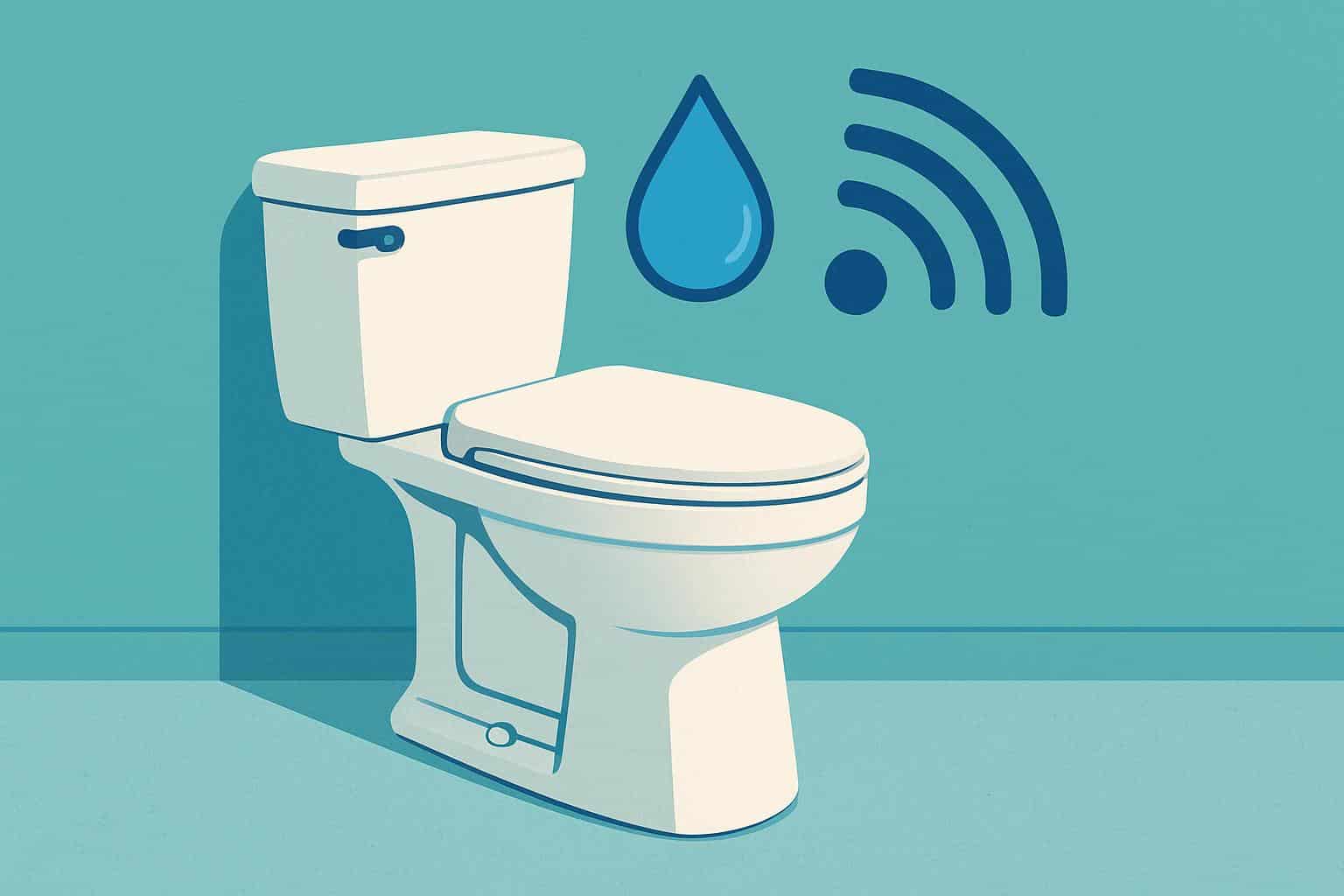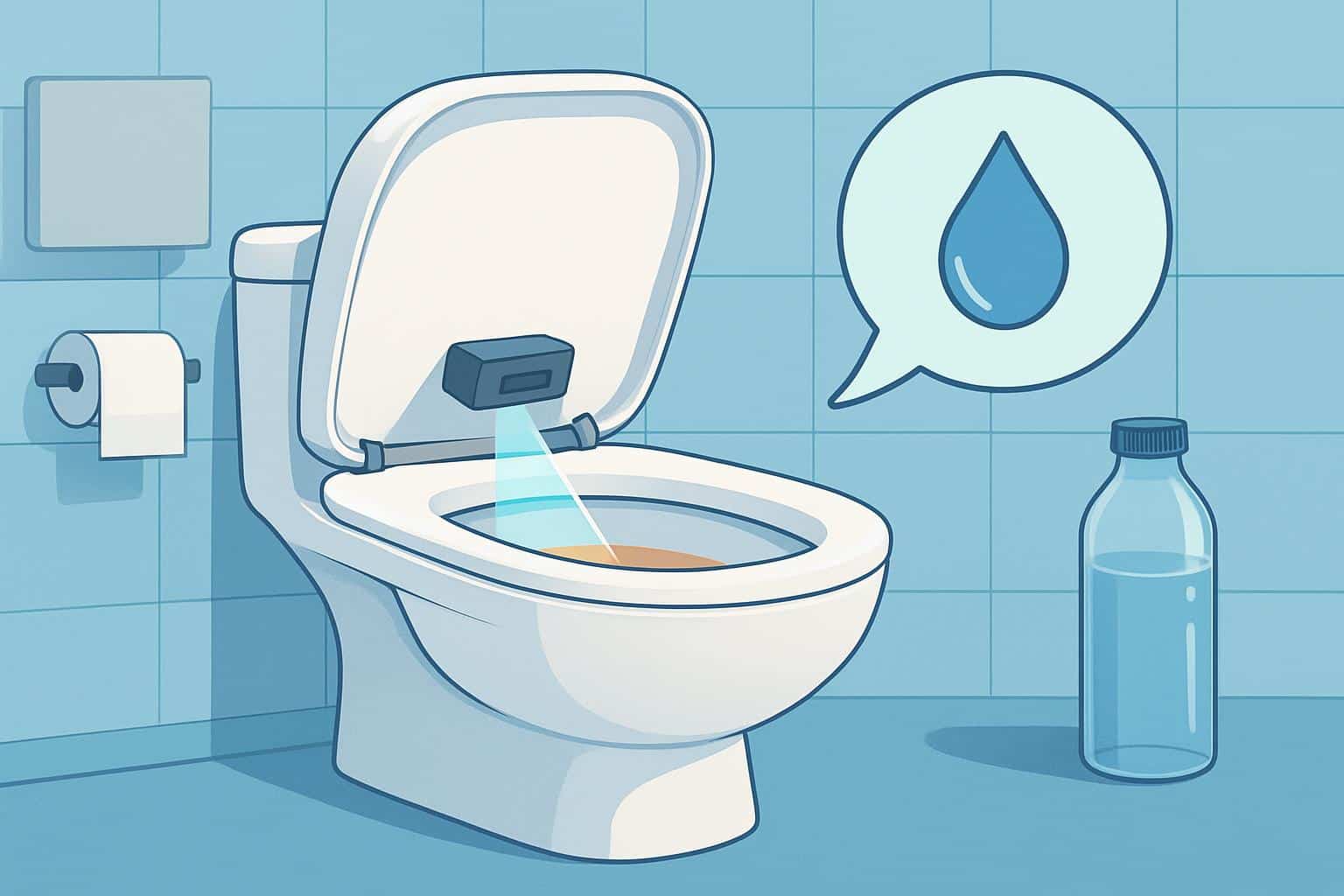Your toilet is going to start offering opinions on your hydration. Now, a new wave of bathroom tech can analyze what you leave in the bowl and gently nudge you to drink more water, translating all kinds of everyday habits — pee regimen data tracking! — into health signals you can actually use.
How a Toilet Can Measure Your Hydration Levels
Urine reveals hydration status long before you feel thirsty. Smart toilet sensors employ optical spectroscopy — LEDs and photodiodes set to read a particular light wavelength — to measure urine’s color, clarity, and other features. By reading absorption and reflection of light, the device can calculate markers for hydration including urine concentration or specific gravity.
- How a Toilet Can Measure Your Hydration Levels
- What Else These Smart Toilets Can Signal About You
- Why Passive Data From Your Bathroom Matters
- Inside the Smart Toilet App and Hardware Details
- Accuracy and Limits of Smart Toilet Hydration Tech
- Cost and Competitors in the Smart Toilet Market
- The Big Picture on Passive Bathroom Health Tech

So — in short: Dark, concentrated urine usually means you’re not drinking enough.
If your pee is light and clear, on the other hand, it’s a sign that you’re properly hydrated. Urine specific gravity of 1.020 or greater is commonly suggested by sports scientists as an indicator of dehydration in athletes (Stellingwerff, C., Decombaz, J., Harris, R., and Boesch, C., 2010). Consumer devices can’t do a lab-grade refractometry test in your bathroom, but they can estimate trends over time and alert you when your hydration skews from baseline.
To contextualize the readings and prevent misfires, these sensors work in tandem with a camera that peers only into the bowl (not at you). The app processes raw optical data and delivers a daily hydration score, so you have no question — drink more, maintain, or scale back — instead of guessing.
What Else These Smart Toilets Can Signal About You
In addition to hydration, spectroscopy can also pick up on hemoglobin’s characteristic light-absorption signature, so it can tell whether blood is present in urine or stool. That’s not a diagnosis, of course, but it acts as a helpful nudge to check in with a clinician if the pattern goes on for more than two weeks and starts to disrupt normal activities. The camera can also rate the quality of stool; it takes a picture in the bowl and, over five days, compares those images to the clinical standard, called the Bristol Stool Chart — turning “How am I doing?” into a trend line that you can follow week to week.
Together, these signals present a running picture of gut health, bathroom regularity, and potential issues — like urinary tract irritation, the risk of forming kidney stones, or signs of gastrointestinal bleeding — that might otherwise go unnoticed.
Why Passive Data From Your Bathroom Matters
Many shed their wearables after a month or two, but no one forgets to go to the bathroom. That’s the appeal of ambient health tech: It measures without asking for your attention. And consumer surveys from digital health researchers have shown that about half of adults say they have used a health wearable at some point, but long-term compliance lags. A passive sensor is something that meets you where you are — literally — reducing the exertion required to receive insight.

The health stakes are real. The National Academies call for a total daily water intake of about 3.7 liters and 2.7 liters per day for men and women from all beverages and foods, but note that needs vary depending on climate, age, sex, and level of physical activity, among other things. The American Urological Association recommends producing at least 2.5 liters of urine a day to prevent recurrence of stones, and higher fluid intake can halve the probability of having another one. A device that quietly nags you into doing the right thing could be just what turns those guidelines into habits.
Inside the Smart Toilet App and Hardware Details
Newer toilet-mounted units clamp to the rim and aim sensors downward into the bowl. Battery life is generally around a week, and multiple users in a household can set up separate profiles. Another has a small finger authenticator that must be used before each session in order for readings to be associated with the right person — helpful when you’re trying to track personal trends, not just the entire family’s.
The data are all processed by a companion app, where digital readouts in the form of hydration scores and toilet-visit frequency track poop consistency patterns and identify dates when blood might have been noticed. The manufacturers say data are encrypted end to end and that these tools are consumer wellness devices, not medical records systems, so traditional health privacy laws may not automatically apply. It’s a useful exercise to review a product’s privacy policy before you make the purchase.
Accuracy and Limits of Smart Toilet Hydration Tech
Optical readings can be affected by bathroom lighting and what you consumed — beets and B vitamins can change urine color intensely. The best systems compensate for this through the calibration of their light source, setting a sensing region, and averaging over several frames to suppress any noise. As a result, these are health signals but not phlebotomy diagnostics. If you repeatedly get alerts about blood or see a long-term dehydration trend even when your intake is in line with what your doctor recommended, contact a clinician.
It is also key to know what the device is — and is not — approved for. Some are CE-marked for certain functions; however, similar competitors also exist in the market (e.g., early smart urine analyzers available in Europe). In the United States, the majority of consumer toilet sensors market themselves as lifestyle tools, not FDA-cleared medical devices — and that shapes the claims they can make.
Cost and Competitors in the Smart Toilet Market
The latest high-profile addition is a toilet-mounted sensor that retails for $599, part of a broader push by traditional bathroom brands into digital health. It falls into a niche category of relatively expensive, app-connected home-test products that are offered alongside cartridge-based urine analyzers and app-enabled wellness strips. The differentiator here is passive, around-the-clock monitoring without any extra work: a design decision that might just get this habit to stick.
The Big Picture on Passive Bathroom Health Tech
If your watch counts the steps you take, then your toilet can count how many times you fill the tank with hydration, too. By collapsing a daily ritual into a health check, these devices offer the possibility of earlier nudges and fewer surprises — from mild dehydration to data worth a doctor’s attention. The technology is not a stand-in for clinical testing, but it might be the most straightforward reminder you encounter in your day: it’s time to have another glass of water.

